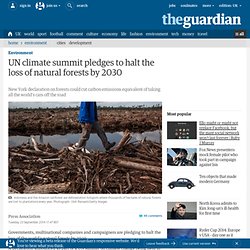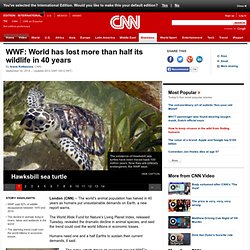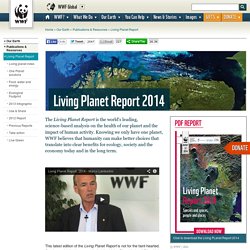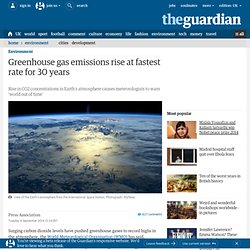

The Green Edit: sustainable packaging. If you're into eco beauty it's not just what's inside that counts, but the packaging too.

Here our green beauty blogger Imelda Burke rounds up the best boxes, including those grown on trees BY Imelda Burke | 10 October 2014 The Green Edit: sustainable packaging, O'Rights You've sifted through the ingredients label and found the perfect product but your eco-agenda extends past just ingredients and includes peering into the packaging of your products too. With vegetable ink printing, recycled card boxes and recyclable glass all easily attainable, most natural cosmetic brands will have some sustainable element to their packaging. While some brands are looking to reduce the weight of containers, which in turn reduces the fuel consumption used in transportation, others are switching to biopolymers or natural sustainable materials. READ - The Green Edit: organic bathing rituals A new brand from Taiwan, which has just launched in the UK, goes even further. READ - The Green Edit: natural bronzers.
UN climate summit pledges to halt the loss of natural forests by 2030. Governments, multinational companies and campaigners are pledging to halt the loss of the world’s natural forests by 2030.

A declaration announced as part of a UN summit on climate change being held in New York also pledges to halve the rate of deforestation by the end of this decade and to restore hundreds of millions of acres of degraded land. Backers of the New York declaration on forests claim their efforts could save between 4.5bn and 8.8bn tonnes of carbon emissions per year by 2030 – the equivalent of taking all the world’s cars off the road. The UK, Germany and Norway have pledged to enter into up to 20 programmes over the next couple of years to pay countries for reducing their deforestation, which could be worth more than £700m. Companies such as Kellogg’s, Marks & Spencer, Barclays, Nestle, the palm oil giant Cargill, Asia Pulp and Paper and charities including the RSPB, WWF and the International Union for Conservation of Nature (IUCN) have signed the declaration. WWF: World has lost more than half its wildlife in 40 years.
The existence of Hawksbill sea turtles have been traced back 100 million years.

Now they are critically endangered, the WWF says. Living Planet Report. The Living Planet Report is the world's leading, science-based analysis on the health of our planet and the impact of human activity.

Knowing we only have one planet, WWF believes that humanity can make better choices that translate into clear benefits for ecology, society and the economy today and in the long term. This latest edition of the Living Planet Report is not for the faint-hearted. One key point that jumps out is that the Living Planet Index (LPI), which measures more than 10,000 representative populations of mammals, birds, reptiles, amphibians and fish, has declined by 52 per cent since 1970. Put another way, in less than two human generations, population sizes of vertebrate species have dropped by half. Greenhouse gas emissions rise at fastest rate for 30 years. Surging carbon dioxide levels have pushed greenhouse gases to record highs in the atmosphere, the World Meteorological Organisation (WMO) has said.

Concentrations of carbon dioxide, the major cause of global warming, increased at their fastest rate for 30 years in 2013, despite warnings from the world’s scientists of the need to cut emissions to halt temperature rises. Experts warned that the world was “running out of time” to reverse rising levels of carbon dioxide (CO2) to tackle climate change. Data show levels of the gas increased more between 2012 and 2013 than during any other year since 1984, possibly due to less uptake of carbon dioxide by ecosystems such as forests, as well as rising CO2 emissions. The annual greenhouse gas bulletin from the WMO showed that in 2013 concentrations of CO2 in the atmosphere were 142% of what they were before the Industrial Revolution.
“We must reverse this trend by cutting emissions of CO2 and other greenhouse gases across the board. China pollution levels hit 20 times safe limit. Days of heavy smog shrouding swathes of northern China pushed pollution to more than 20 times safe levels on Friday, despite government promises to tackle environmental blight.

Visibility dropped dramatically as measures of small pollutant particles known as PM2.5, which can embed themselves deep in the lungs, reached more than 500 micrograms per cubic metre in parts of Hebei, a province bordering Beijing. The World Health Organization’s guideline for maximum healthy exposure is 25. In the capital, buildings were obscured by a thick haze, with PM2.5 levels in the city staying above 300 micrograms per cubic metre since Wednesday afternoon and authorities issuing an “orange” alert. “It’s very worrying, the main worry is my health,” said a 28-year-old marketing worker surnamed Hu, carrying an anti-smog mask decorated with a pink pig’s nose as she walked in central Beijing. In a sign of growing environmental activism, Greenpeace East Asia projected the message “Blue Sky Now!”
Leonardo DiCaprio (UN Messenger of Peace) at the opening of Climate Summit 2014.